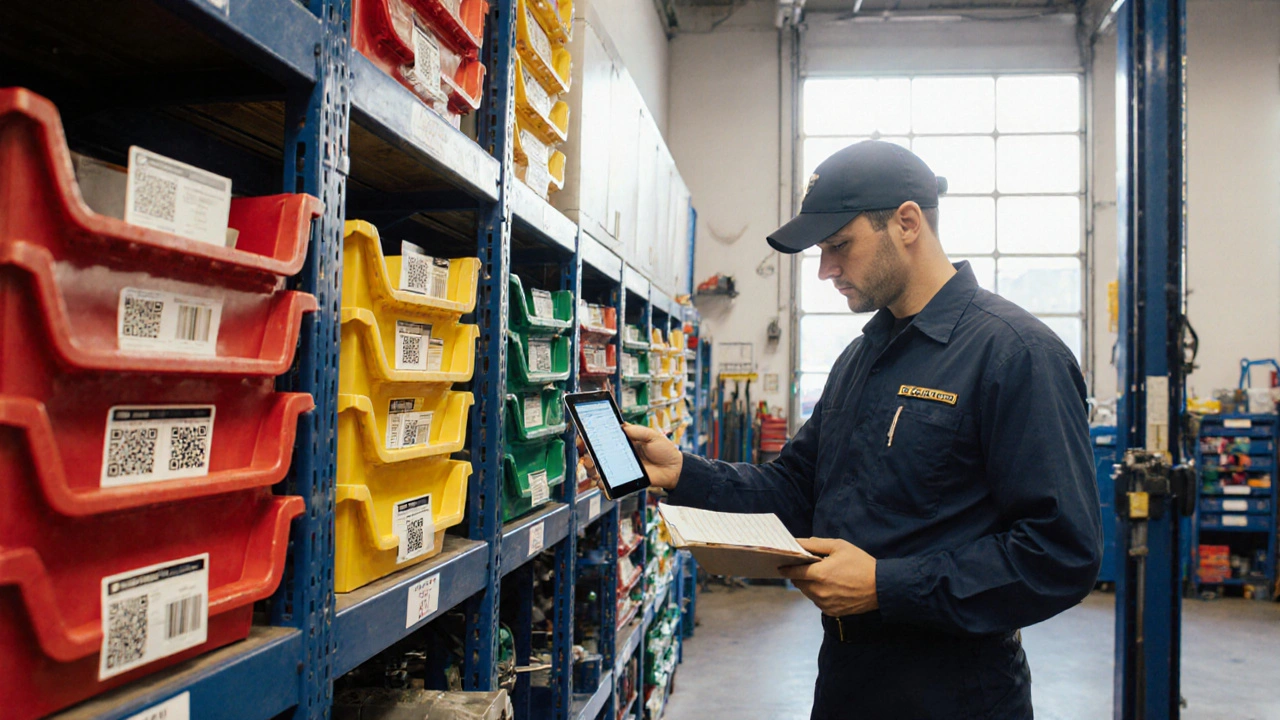When you run a fleet of vehicles—whether it’s delivery vans, service trucks, or company cars—fleet parts inventory, the organized stock of replacement components needed to keep commercial vehicles running. Also known as commercial vehicle parts stock, it’s not just about having spare tires or brake pads on hand. It’s about reducing downtime, cutting repair costs, and keeping your drivers moving without delays. A poorly managed inventory means waiting days for a part to arrive, losing productivity, and paying rush shipping fees. A smart one means fixing a flat tire in 20 minutes because you already had the replacement wheel in the garage.
Managing fleet parts inventory isn’t just about storage. It ties directly to fleet maintenance—the routine checks and fixes that keep vehicles safe and efficient. If your trucks need new brake rotors every 40,000 miles, you need to track that pattern and stock enough rotors before they’re all worn out. It also connects to fleet management, the bigger system that tracks mileage, service schedules, and fuel use. Without accurate parts inventory, your fleet management software is flying blind. You might know a vehicle is due for service, but if you don’t have the part, the schedule means nothing.
Think about what parts break most often. From the posts in this collection, you’ll see how steering wheel vibration often comes from worn suspension parts, how headlight restoration is cheaper than replacement, and how brake controllers are critical for trailers. These aren’t random fixes—they’re recurring needs. A fleet that runs 100 vans will go through hundreds of brake pads, spark plugs, and air filters every year. Knowing which brands last longer (like Toyota or Honda, based on service cost data) helps you pick parts that reduce long-term expenses. You don’t need every part in stock, but you need the top 10% that cause 80% of the breakdowns.
Some fleets keep parts in central warehouses. Others use mobile service units that carry common fixes on the truck itself—like the ones mentioned in the posts on mobile service units. These units cut wait times by bringing the repair to the vehicle. That’s why knowing your inventory isn’t just about counting boxes—it’s about understanding where parts are needed most and how fast they must be delivered.
And it’s not just about buying parts. It’s about tracking them. Labeling, rotating stock, checking for recalls, and disposing of old or unsafe components all matter. A 2018 car model might still be on the road, but if you’re stocking parts for it, you need to know which ones are obsolete, which are still supported, and which are better replaced with upgraded versions. The right inventory system turns guesswork into data-driven decisions.
What you’ll find in these posts isn’t just theory. It’s real-world advice from people who fix fleets every day—how to spot worn shocks before they fail, how to restore headlights instead of replacing them, how to cut service costs without risking safety. You’ll see how one small fix, like replacing a worn sway bar or fixing a tire imbalance, can prevent a chain reaction of bigger problems. This collection gives you the tools to build a fleet parts inventory that doesn’t just sit there—it works for you.
Posted by
Liana Harrow
9 Comments

Effective parts inventory management keeps fleet vehicles on the road longer and reduces costly downtime. Learn which parts to stock, how to track usage, and how to avoid common mistakes that drain your budget.
read more